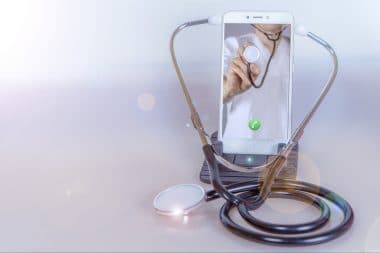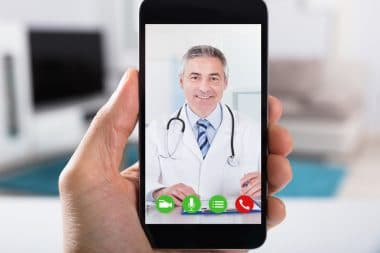A pandemic can truly change the way a world operates. In this day and age, most institutions, services, and workplaces have to offer remote/virtual options for their clients, partners and employees. The medical industry is no different. Treating patients virtually can be quite difficult in many respects, but communicating with them is another thing entirely. Effective communication is the backbone of any industry and, over the last year, doctors have had to come up with different ways to communicate with and treat their patients.
Many medical practices have integrated some sort of online, virtual or telecommunication service into their day-to-day operations. A simple check-up can be done via video chat or over the phone, where most simple questions can be answered and medications can be prescribed. There are quite a few different ways doctors can remotely communicate with their patients. Let’s take a closer look at some of them:
1. Use of a Virtual Platform
A virtual platform helps to keep everything in one place. These hubs or spaces can house all the information you need, make it easier for patients to make appointments, and have their questions answered. There are many virtual platforms out there that offer completely online services to the public and many medical practices are investing their time into these platforms to help communicate with their patients more effectively and easily.
Most platforms offer online or over the phone consultations, direct messaging, online question and answer forums as well as booking tools and helpful articles. Many doctors and medical offices are now using a flexible virtual care platform to better communicate with their patients, especially the ones where it’s harder and more difficult for them to come into the office physically.
2. Phone Calls
Telecommunication can work both within a virtual platform and simply on its own. Many doctors have made this option available to their patients, so they can have a simple consultation from the comfort of their own home. There doesn’t have to be an external virtual system put in place for this to work, although it may help. All that is required is for both parties to have a phone to communicate with.
Doctors could also opt for a video conference/call, if their patients wished to show them something, or felt more at ease seeing their doctors face. After all, it’s all about the patient and their needs.
3. Email
For simple tasks such as check-ups, appointment reminders and prescriptions, maybe even a phone call isn’t necessary, and easy and effective communication via email would work just as well. There are even studies done on the positive effects of using emails can have on your health.
Doctors communicating with patients isn’t just limited to appointments but can also be advice and news delivered in a weekly newsletter. It could be health tips and informative articles or videos. Using email to communicate with patients can show some added care, especially if the doctor is going out of their way to share useful and helpful information.
4. Text Message or Instant Message
Simple, to the point, and easy to manage. Sending out text messages is a great way to remind patients of appointments, when they need to book in again, where they can do that, and to send out any other reminders. While you’re not going to have any serious, in-depth conversations via text message with your doctor, they can use this to effectively communicate small amounts of information.
Your doctor can send a text, or they can have it automatically set up with a virtual care system and it pretty much takes care of itself. In this climate where so many people are working from home or working remotely, text and instant messaging can be really easy and efficient.
A lot of virtual platforms have a little chat box available for patients to hop online and ask questions when needed. Often times these instant message boxes are automated by artificial intelligence and work only to point the patient in the right direction. However, in other cases, they’re monitored by a real person who can offer simple guidance and connect them to a doctor who can help.
Instant messaging is pretty much where email and text come together. It’s set up perfectly as a question-and-answer forum and is not difficult to use. There’s no waiting around, you can have a quick and simple conversation with your doctor to establish what you need or how they can help you.
5. Fax
Yes, people still use fax machines. Doctors especially, because they deal with personal files, physical prescription documents, and medical forms a lot. Fax can also be used to send documents out to patients too, and not just for in-house communication. If a doctor has prescribed their patient medication over the phone or via video chat, they can easily fax them a copy, or even use it to send them vital information that needs to go directly from them to their patients’ hands.
Many older generations would much prefer to use a fax machine over having to keep track of digital copies of things that can sometimes get lost or deleted. It’s not necessarily the perfect way to have a conversation or treat a patient but for some instances, it’s a great way to exchange information that’s better suited for hard copy handling than over the internet.
In Conclusion
Over the last year, the world has had to reassess and readjust the way people communicate with one another on a day-to-day basis. Many industries had to come up with an alternative to face-to-face communication. Doctors’ offices especially had to reassess because many people have been too scared or unable to visit their doctor’s office.
This has been an opportunity though for medical practices to make their services more accessible overall. They’re using virtual platforms to communicate with their patients and to create a space online for all relevant and important information. Offering virtual services allows for a remote level of communication, not just for people who were existing patients, but for those who live remotely too. Many who haven’t had the same level of access as others now do, and this is a good thing.








Reply